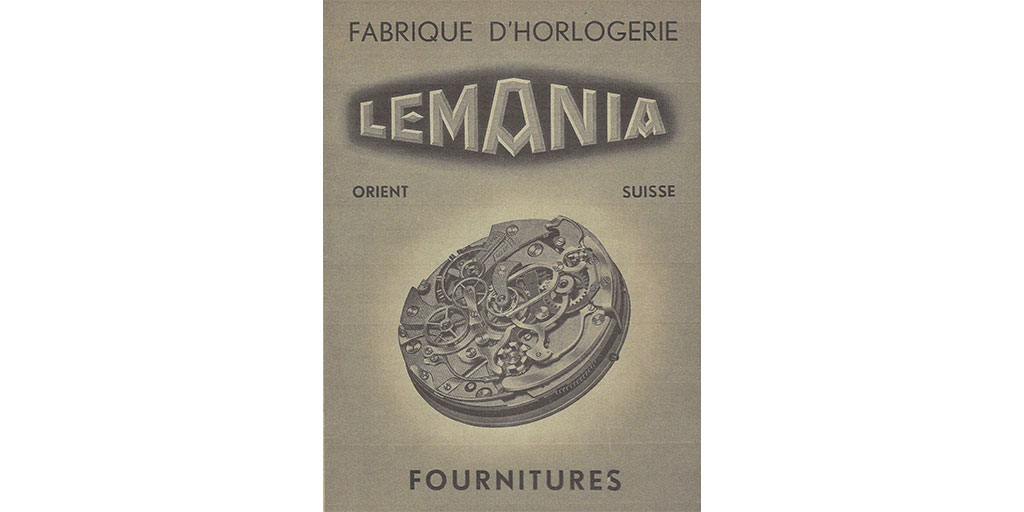When we look back at the long and distinguished history of Patek Philippe’s legendary chronograph movements, it is interesting to note that prior to launch of its own regular production, in-house movement in 2009, only three different chronograph calibers were used: the caliber 13-130 based on the Valjoux ebauche, the caliber 13 based on the Victorin Piguet ebauche, and the caliber 27-70 based on the Lémania 2310 ebauche.

Lémania was founded in 1884 by Alfred Lugrin (1858 – 1920) who had gained his initial watchmaking experience at Jaeger-LeCoultre in Le Sentier. From the beginning he specialized in the production of chronographs, stopwatches and repeaters. His outstanding watch movements received many awards including gold medals at exhibitions in 1906 in Milan and 1914 in Bern. The movements were signed with “A Lugrin” inside a Maltese Cross until 1930 when under the management of Lugrin’s son-in-law, Marius Meyland, it was named Lémania Watch Company. The name was inspired by Lake Geneva which is known as Lac Léman by the French speaking population of Switzerland. Lémania did not stay independent for long because The Great Depression which started in 1929, was making its mark on much of the watch world and many companies needed to consolidate their strength to survive. In 1932, Omega, Tissot and Lémania joined forces to become the Société Suisse pour l’Industrie Horlogére (SSIH). Lémania became the exclusive movement supplier for Omega and by 1936, half a million Lémania movements were in production.
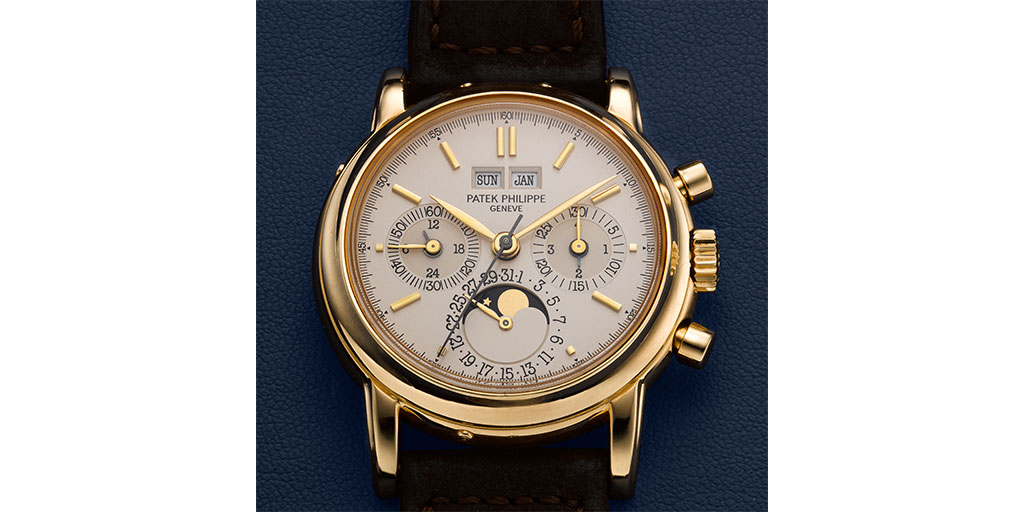
During the 1970s and the rise of electronic and quartz watches, sales of mechanical watches from the SSIH group collapsed. In 1980, creditor banks gave Nicolas Hayek (who later founded the Swatch Group) the task of restructuring the group. In a management buyout, Lémania separated from the SSIH group in 1981 and changed its name to Nouvelle Lémania. In 1992, Nouvelle Lémania was brought by Breguet which seven years later was brought by the Swatch Group. It was soon after this acquisition that Patek Philippe seriously investigated producing its own in-house chronograph movement and securing its own independence. During its historic run in the annals of Patek’s legendary chronographs, the Lémania-based movement was used for almost 25 years in the following references: 3970, 3971, 3990, 5004, 5020, 5021, 5070, 5071, 5970, 5971.
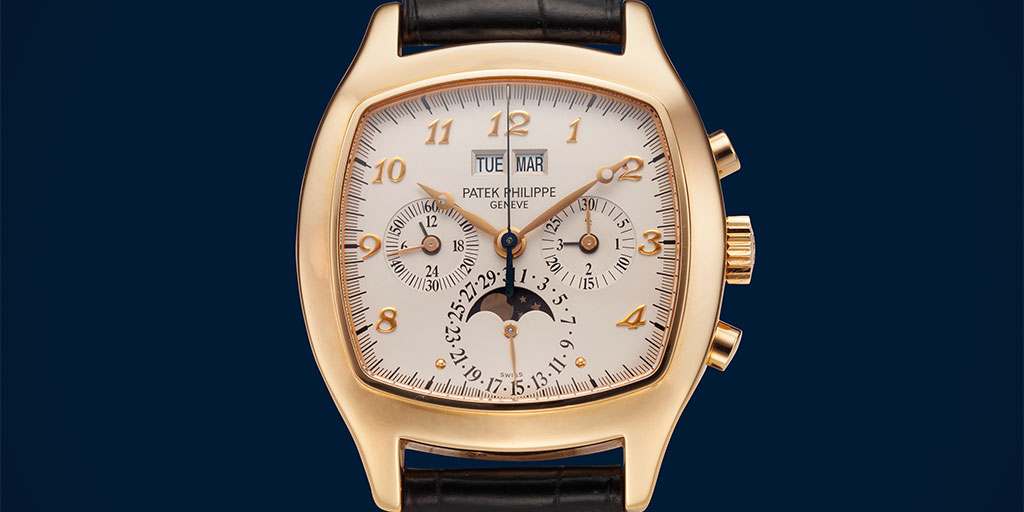
By the mid-1980s, the last of the remaining stock of Valjoux-based chronograph movements was placed in a ref. 2499 (production of Valjoux’s base movements had ceased in 1974). In preparation for the end of the iconic ref. 2499 era, Philippe Stern had already been working on a new, equally noble perpetual calendar chronograph and had decided to work with another Vallée de Joux manufacturer, Nouvelle Lémania. In 1986, the ref. 3970 was born with the caliber 27-70 based on a movement blank produced by Lémania for exclusive use by Patek.

Although the caliber 27-70 was brilliantly remastered by Patek Philippe, it was based on the original Lémania 2310 movement that was first introduced forty years earlier in 1942. It was designed by Albert-Gustave Piguet, the genius technical director at Lémania. This was the young watchmaker’s first major achievement, and it became the first, modern high-performance chronograph caliber with a long and storied history. For example, it was the Lémania 2310-based Omega caliber 321 that enabled the Speedmaster to pass NASA’s tough tests to become the official watch of the Gemini and Apollo astronauts. At 27 mm in diameter and 6.74 mm in height, it was the world’s smallest chronograph movement beating the Valjoux 13-130 (29 mm) by a significant margin. Thus, when Philippe Stern used this movement in the ref. 3970, he was able to make a smaller watch at 36 mm vs the ref. 2499’s 37.5 mm diameter.
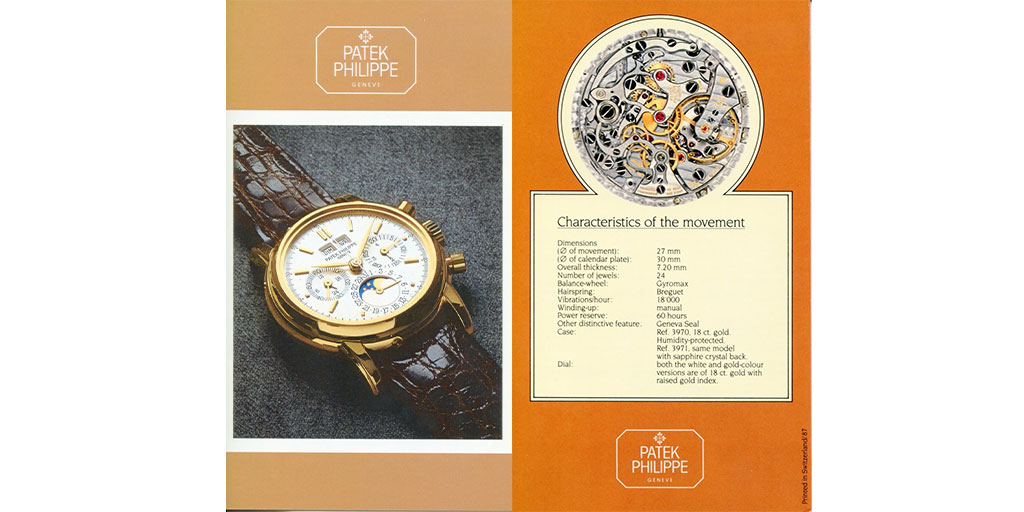
The 2310 was originally introduced in two versions: the caliber 27-17P two-counter version (seconds and chrono minutes) and the caliber 27-12P three-counter version (seconds, chrono minutes and hour totalizer). To add to the complexity, the movement came in 17-jewel version (which formed the base if the Omega 321) and a 21-jewel version with a swan-neck regulator known as the Lémania 2320. The manually wound 2320 with column-wheel control and horizontal clutch was extremely well suited as a base that Patek Philippe could refine and optimize.
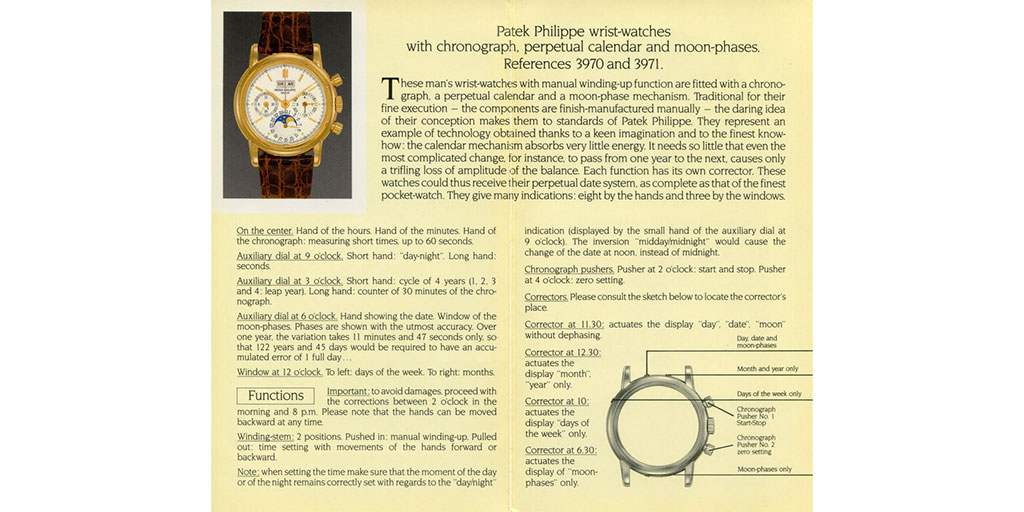
When Patek and Nouvelle Lémania joined forces, it was agreed that Lémania would supply the basic components including the plates and Patek would handle everything else. Philippe Stern demanded in-depth modifications: nearly all of the components were altered, and all adjustment, assembly, finishes and inspection processes were performed in-house.
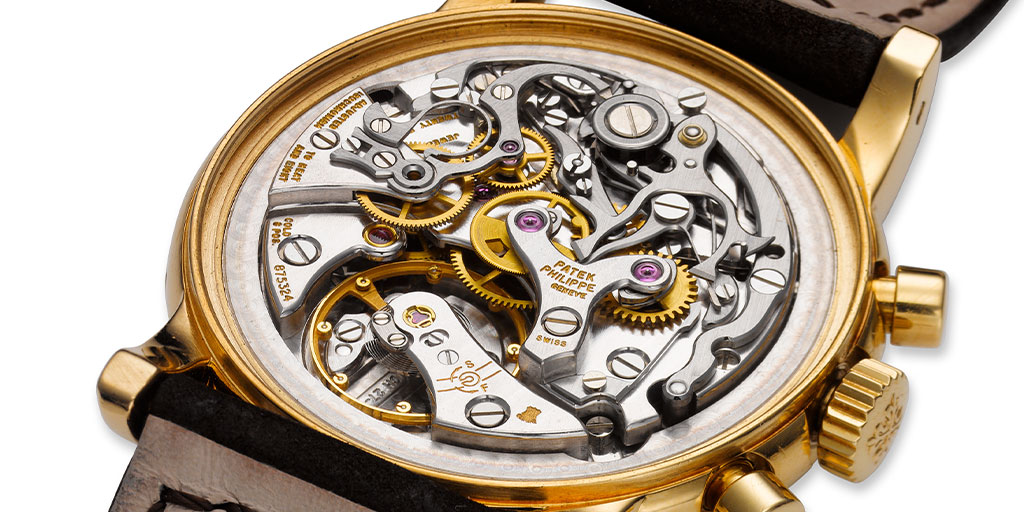
The design of the escape-wheel and fourth-wheel cocks as well as of the chronograph bridge, including the geometry and pivot point of the clutch lever was reminiscent of its iconic Patek Philippe predecessors from 1923 onwards. The column wheel was fitted with a cap to enhance functional reliability. Complex measures were employed to optimize torques for which Patek’s watchmakers redesigned the wheel-toothing geometry. The result was a new transmission ratio and for a manually wound chronograph: a remarkable power reserve of 60 hours – at least 10 more than the original movement. Another noteworthy Patek Philippe adjustment is the patented Gyromax balance wheel with its free-sprung Breguet hairspring which runs at 18,000 vph for a fifths-of-a-seconds stopping accuracy. Event durations of up to 30 minutes are recorded by the totalizer at three o’clock. These adjustments and finishes resulted in the ref. 3970 and its caliber 27-70 becoming the first chronograph movement to be awarded the Geneva Seal.
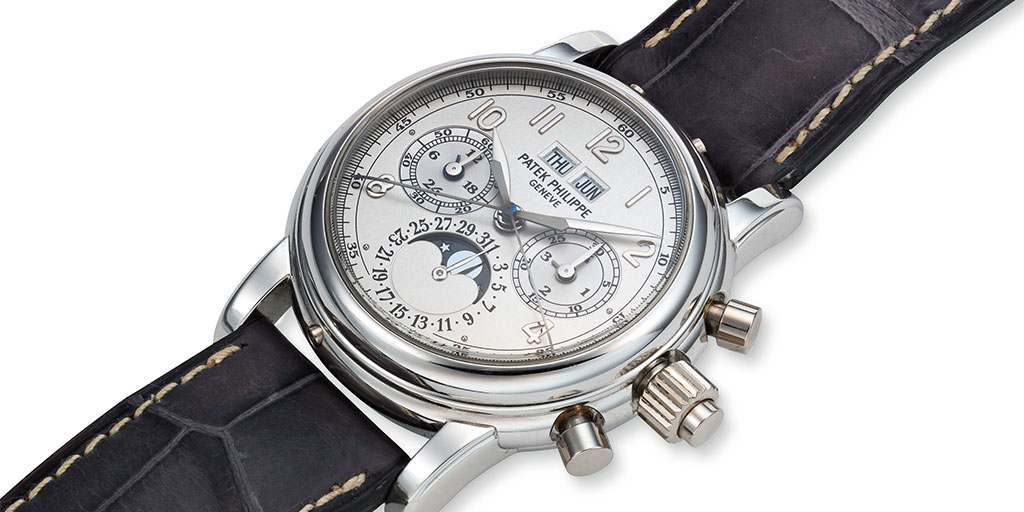
The ref. 3970 was in production for 18 years, during which time approximately a total of 4000 pieces were made in four distinct series. During the 1990s and early 2000s, Patek Philippe continued to redesign the Nouvelle Lémania 27-70 movement. In 1995, the collector favorite ref. 5004P with split-seconds and perpetual calendar was introduced and remained in production until 2011.
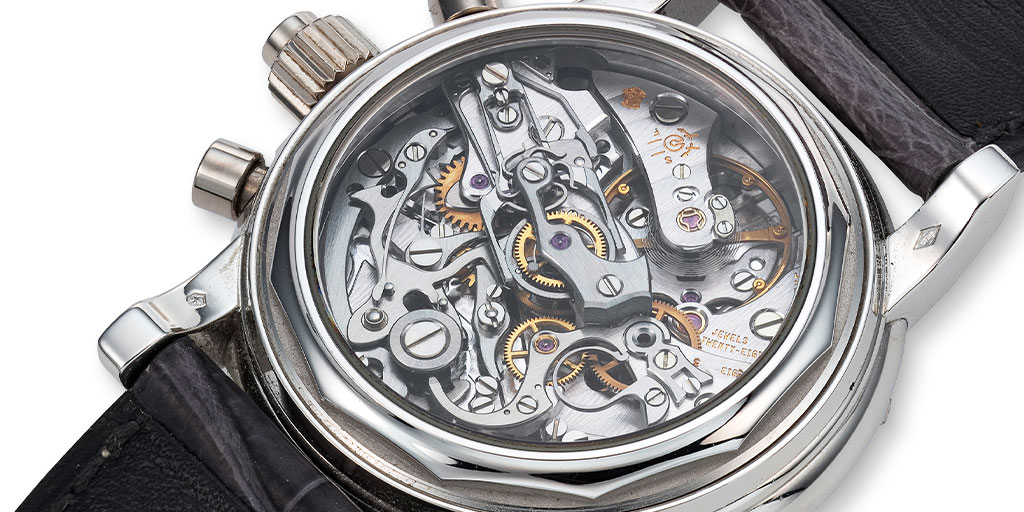
In 1998, the beautiful and simple chronograph ref. 5070 housing the caliber 27-70 PS was the first model with a larger sized 42 mm case and was made until 2009. This manually wound, column-wheel movement with its square-button, signature look of the Patek chronographs from the 1940s was dubbed by enthusiasts as “the most remarkable chronograph movement ever created for a wristwatch”.
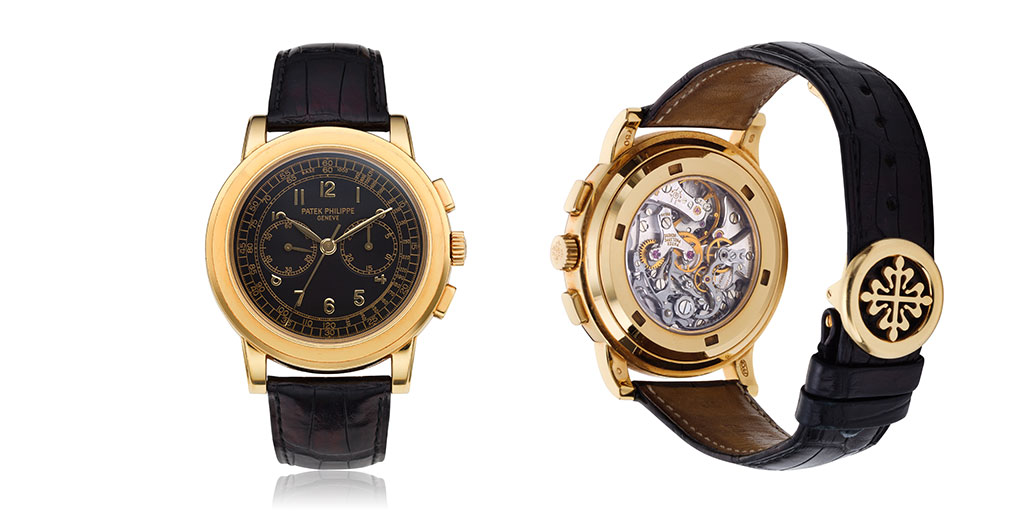
The yellow gold version was launched in 1998, the white gold version in 2001, pink gold in 2003, and platinum in 2010. The highly-jeweled version ref. 5071G was made from 2001 to 2008 set with baguette diamonds and only around 100 pieces were made.
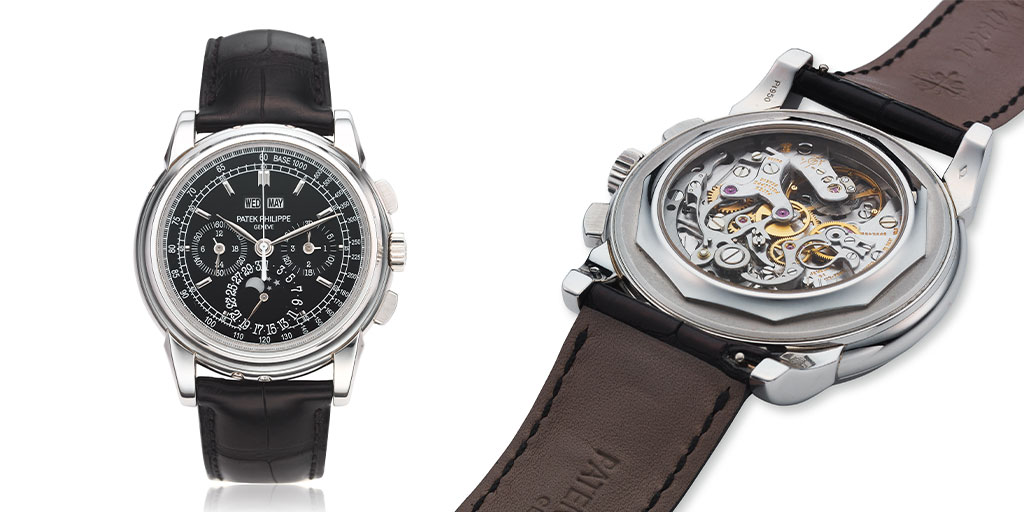
Just as Philippe Stern had taken the reins of introducing the ref, 3970, his son Thierry’s rite of passage into the world of complicated Patek Philippe movements was the ref. 5970. As the 21st century began, and Thierry started to prepare for the taking on the mantle of president of Patek Philippe, his father said, “Now you have to change the ref. 3970. It’s a beautiful watch but you have to find a new design.” In 2004, the ref. 5970 replaced the iconic ref. 3970 and was the last Patek Philippe perpetual calendar chronograph to use the Nouvelle Lémania-based caliber 27-70 PS Q. In terms of design, Thierry hit the new model out of the park and created a worthy bridge between his father’s generation and his. Even its larger 40 mm case size remains true to the original chronograph design. Its design is reminiscent of the ref. 2571 of 1955 and the recesses in the case where the lugs attach recall the ref. 1561 of 1942, of which only three pieces were produced as chronographs.
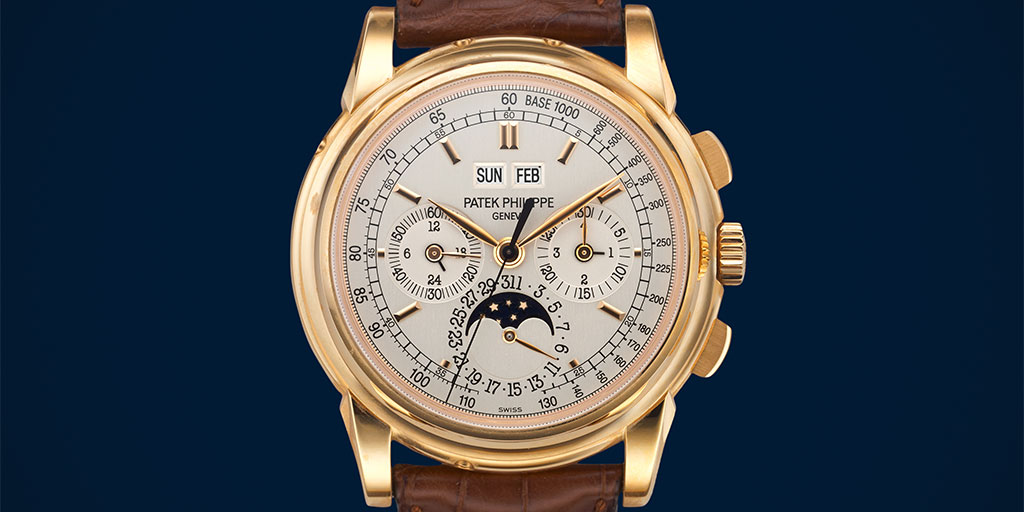
Notable on the ref. 5970 is the tachometric scale, a feature of the ref. 1518 and some versions of the ref. 2499. A tachymeter is a scale used to calculate an average speed over a pre-determined distance, usually one kilometer. The additional 4 mm added to the dial size from the ref. 3970 meant that Thierry could focus on legibility and consequently, it was not necessary to abbreviate the tachymeter as on previous models. In terms of the case design, the concave bezel and rounded central case band echo the ref. 3970, but the flared and faceted lugs and rectangular pushers make it both an ode to the past and future. The ref. 5970 remained in the line until 2009. The highly jeweled version ref. 5971 was produced from 2007 until 2010. During this period limited, magnificent versions were decorated with baguette diamonds, emeralds, sapphires and rubies.
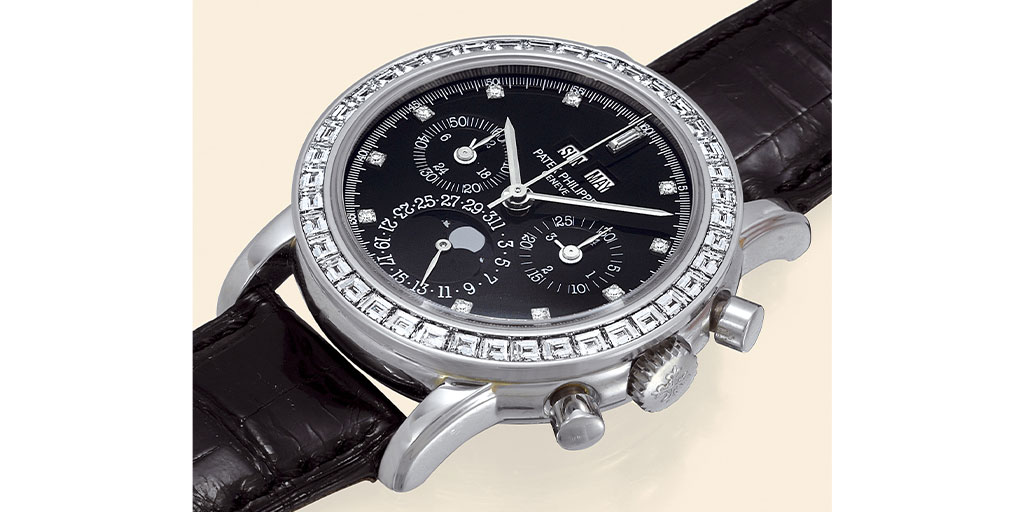
The importance of the Nouvelle Lemania 2310 chronograph ebauche cannot be underestimated in the history of chronographs. Because it was the only manual-wind, column-wheel, classic chronograph being manufactured in ébauche form in the 1980s, it played a seminal role in the Swiss watch industry’s recovery from the Quartz Crisis, allowing watchmakers such as Patek Philippe, Breguet, Vacheron Constantin and Roger Dubuis to collectively stage the resurgence of the mechanical chronograph. Patek Philippe even built a split-seconds version of this movement — a considerable technical undertaking as witnessed by the legendary ref. 5004. Today, Patek Philippe produces an impressive eight different chronograph movements in house. In 2005, the ref. 5959P split-seconds chronograph (only 5.25 mm in height) was the first wrist chronograph conceived, developed, and built in-house with the caliber 27-525 PS in an extremely limited edition of only 10 pieces. A Patek Philippe chronograph with a Lémania-based movement is a collector favorite and will no doubt become a respectable rival to the legendary references 1518 and 2499.

